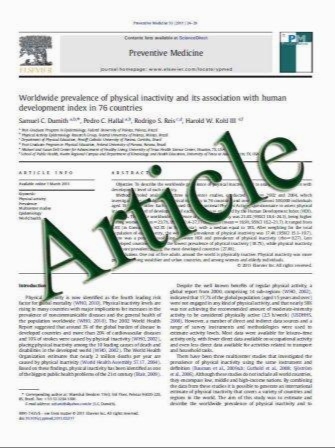Usefulness of Serum Procalcitonin Levels for the Early Diagnosis of Stroke-Associated Respiratory Tract Infections
- نوع فایل : کتاب
- زبان : انگلیسی
- مؤلف : Andreas Hug • Bettina Mu¨ rle • Alexander Dalpke • Markus Zorn • Arthur Liesz • Roland Veltkamp
- چاپ و سال / کشور: 2011
Description
Background Patients with extensive brain infarcts are at increased risk for stroke-associated respiratory tract infections (SARTI), which cause worse outcome. The benefit of general antibiotic prophylaxis is controversial. Early diagnosis of SARTI may improve patient selection for antimicrobial therapy. Procalcitonin (PCT) is widely recognized as serum marker for bacterial infections. Its diagnostic value with respect to SARTI has not been assessed systematically. Methods Serum PCT levels were analyzed in ischemic stroke patients (n = 50) at day 1 (d1) and day 4 (d4) after stroke onset. PCT test performance was assessed by receiver operator characteristics (ROC) curve analysis. Multivariable logistic regression analysis was applied to identify early predictors for SARTI. Results Higher d4 serum PCT levels were associated with SARTI; ROC curve analysis revealed an area under the curve (AUC) of 0.79 (95%-confidence interval (CI) 0.61– 0.96). A 0.25-ng/ml cutoff resulted in a test sensitivity and specificity of 42 and 96%, respectively. Positive (LR+) and negative (LR-) likelihood ratios were 10.8 and 0.6, respectively. In predicting SARTI, multivariable logistic regression analysis controlling for infarct volume ruled out an independent explanatory effect of serum PCT. Greater infarct volume (odds ratio (OR) 1.06, 95%-CI 1.02–1.1) prevailed as independent SARTI-predictor. Conclusions In the absence of clinical signs, post-stroke screening for SARTI using serum PCT levels is not useful since test sensitivity is low. If the clinical suspicion for SARTI is strong, serum PCT-testing (>0.25 ng/ml) may improve diagnostic accuracy by improving specificity.
Neurocrit Care (2011) 14:416–422 DOI 10.1007/s12028-009-9325-6 Published online: 6 January 2010


